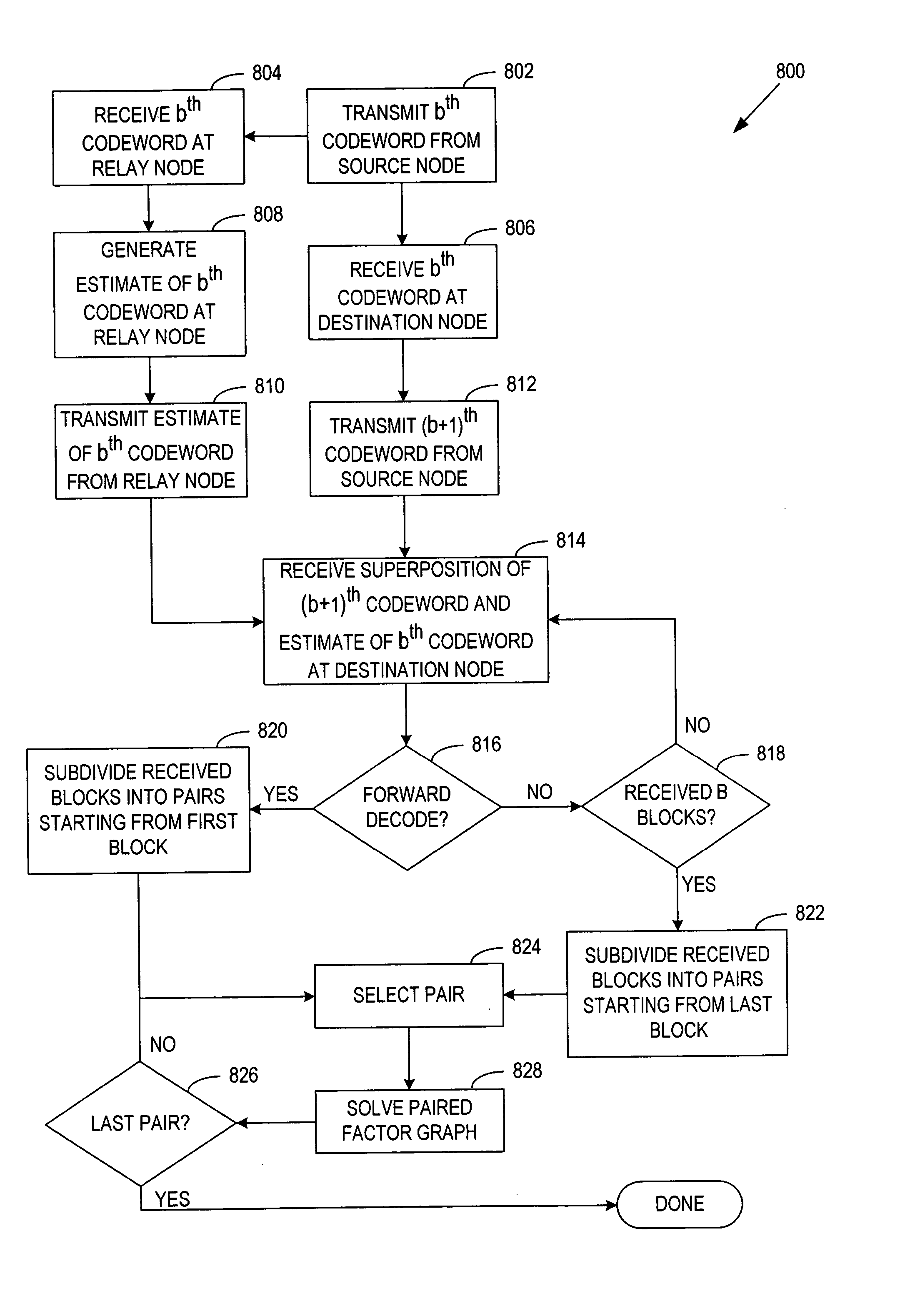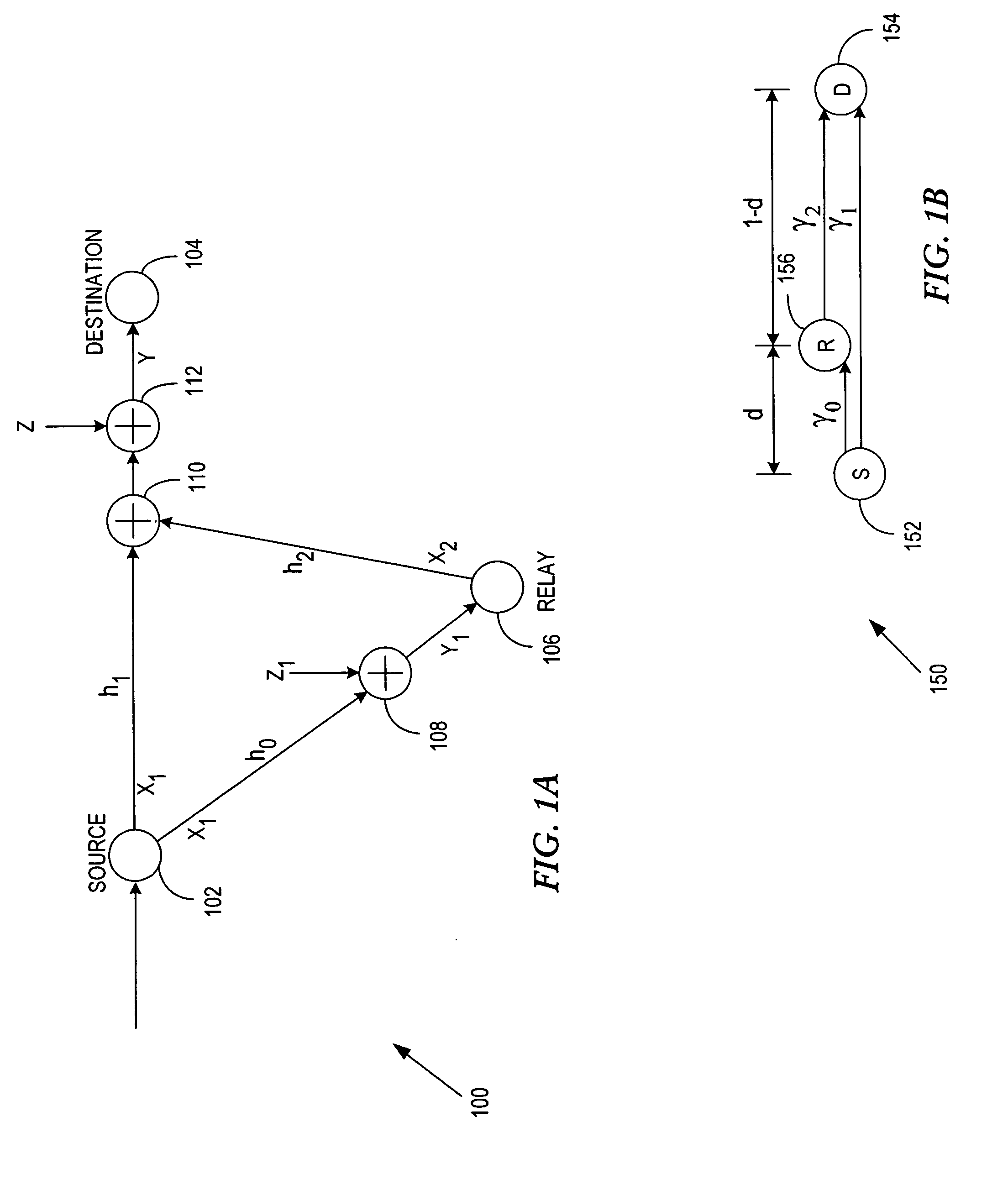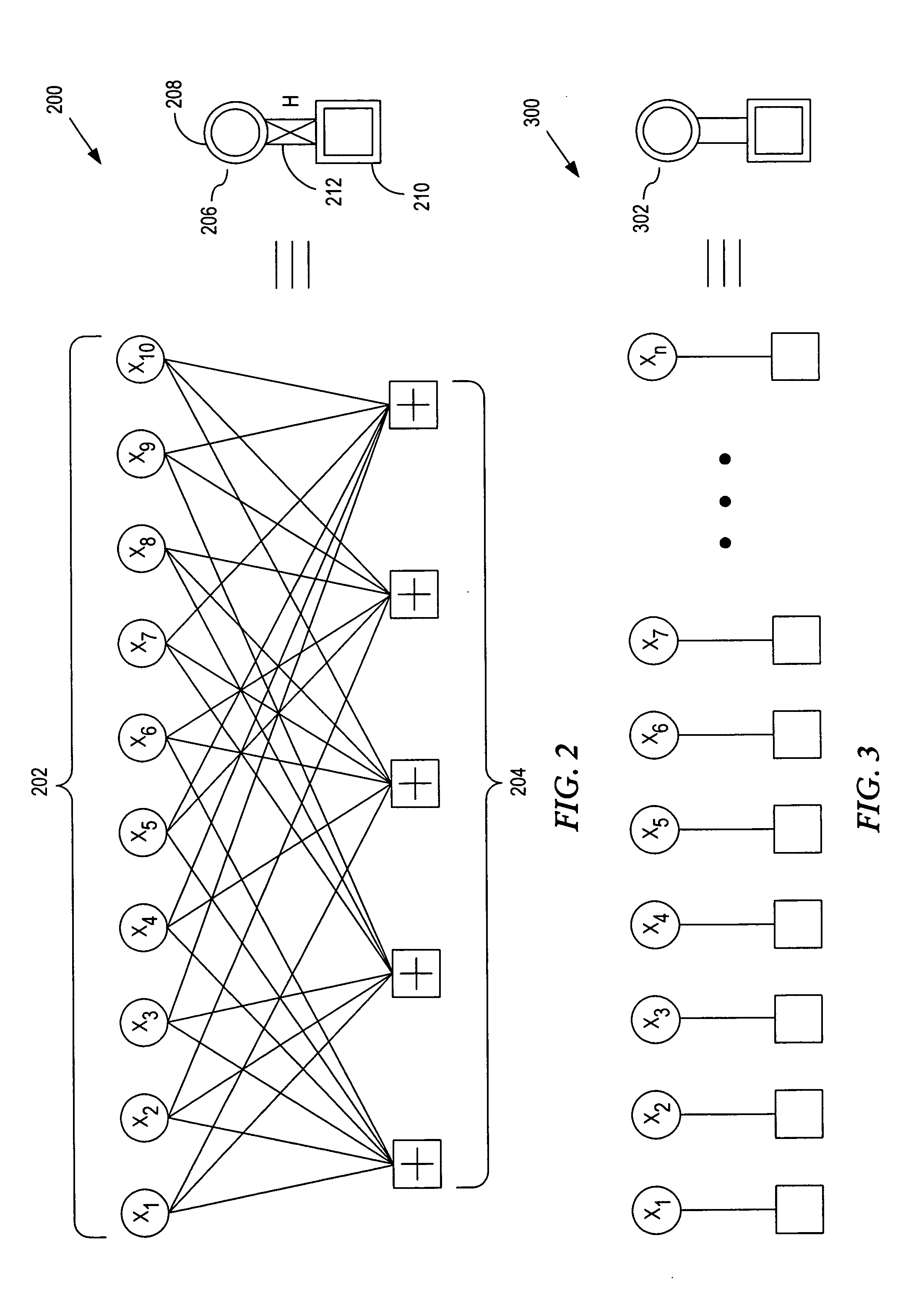General code design for the relay channel and factor graph decoding
a factor graph and relay channel technology, applied in the field of general code design of relay channels and factor graph decoding, can solve the problems of providing a practical level of decoding complexity, direct transmission between the base station and the mobile terminal that is close to the cell boundary can be very expensive, and the design of the relay channel, so as to and improve the decoding accuracy
- Summary
- Abstract
- Description
- Claims
- Application Information
AI Technical Summary
Benefits of technology
Problems solved by technology
Method used
Image
Examples
first embodiment
[0058] In a first embodiment, joint decoding of all B blocks is performed by solving factor graph 400 using a MAP algorithm for an optimal decoding strategy. If constituent codes, e.g., H2 and H3, are chosen to be LDPC codes, however, then it is possible to use the practically implementable method of belief propagation as the optimal decoding strategy. The same method of belief propagation may also be extended for use where the constituent codes are either convolutional or turbo codes. The factor graph representation of these codes and their corresponding decoding schemes is known and will not be further discussed herein.
second embodiment
[0059] In a second embodiment according to the present invention, the original factor graph of the code as illustrated in FIG. 4 is broken down into a sequence of smaller factor graphs 602-606, called partial factor graphs, as exemplified in FIG. 6. Two successive decoding schemes, the forward decoding scheme and the reverse decoding scheme, may then be applied to the partial factor graphs 602-606, each of which exhibit very good performance with orders of magnitude lower decoding complexity as compared to the joint decoding of all B blocks as illustrated in FIG. 4. It should be noted that if the constituent codes are some other form of block codes, such as turbo codes or convolutional codes, the same forward or backward decoding schemes can still be successfully exploited. The challenge remains, however, to find the optimal joint design of the block codes for the coding structures of FIG. 4 and FIG. 6.
[0060] In the forward decoding scheme, as depicted by directional arrows 608 of F...
PUM
 Login to View More
Login to View More Abstract
Description
Claims
Application Information
 Login to View More
Login to View More - R&D
- Intellectual Property
- Life Sciences
- Materials
- Tech Scout
- Unparalleled Data Quality
- Higher Quality Content
- 60% Fewer Hallucinations
Browse by: Latest US Patents, China's latest patents, Technical Efficacy Thesaurus, Application Domain, Technology Topic, Popular Technical Reports.
© 2025 PatSnap. All rights reserved.Legal|Privacy policy|Modern Slavery Act Transparency Statement|Sitemap|About US| Contact US: help@patsnap.com



